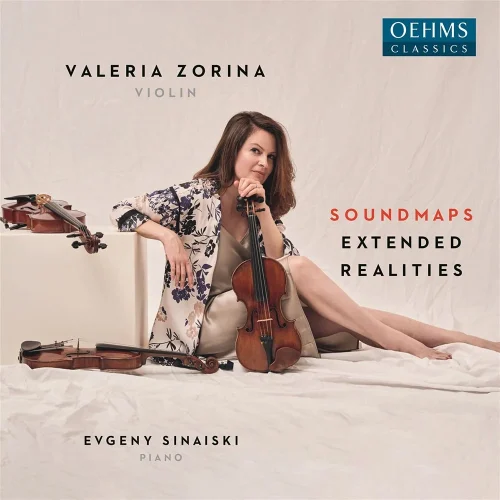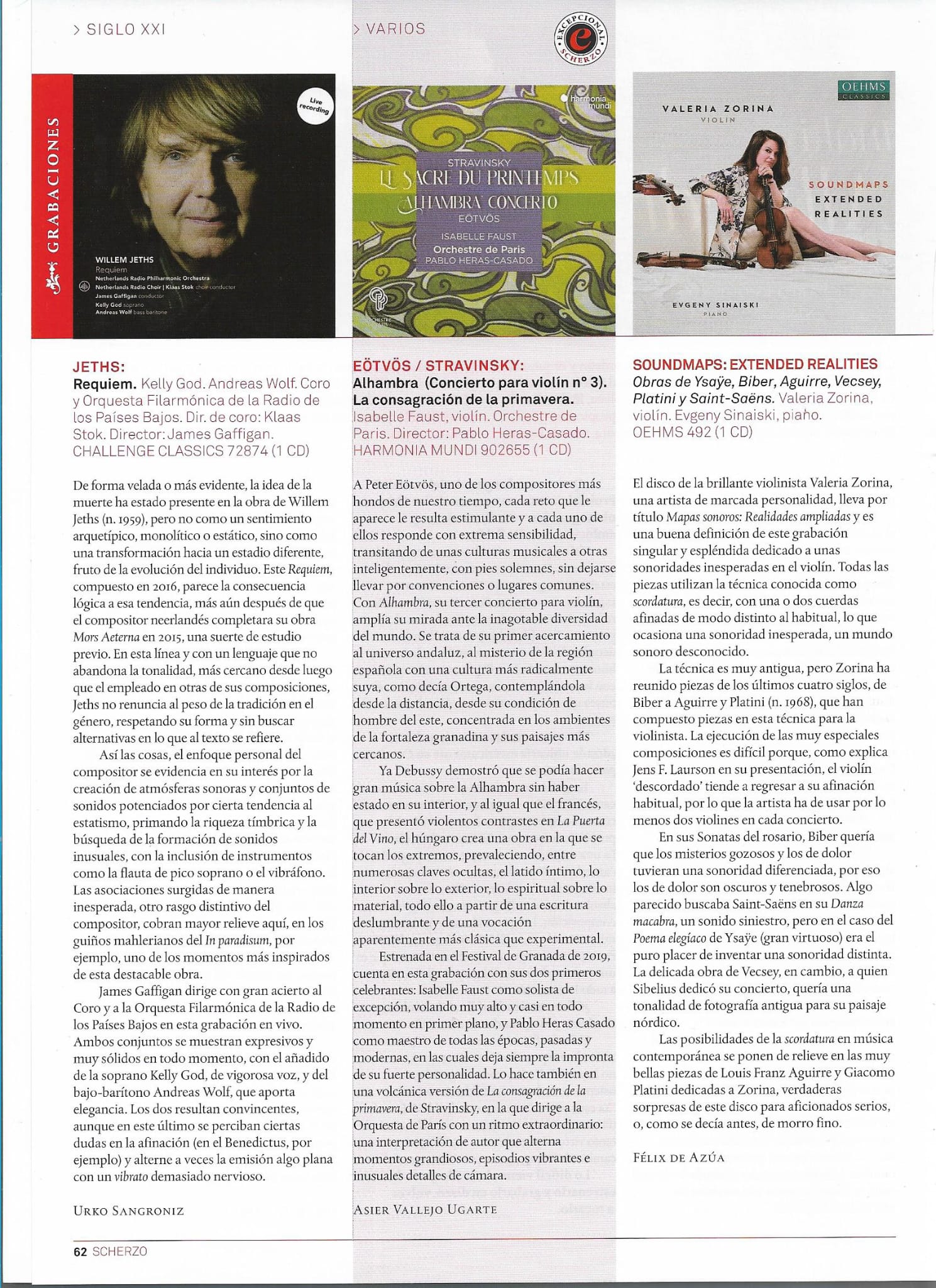ALBUMS
SOUNDMAPS:
EXTENDED REALITIES
These works explore the possibilities of a violin’s scordatura i.e. alternative tunings of the violin strings. Such experimentation with the potential effects was already present in the works of Heinrich Ignaz Franz Biber and runs right through the history of music, from Ysaÿe and Camille Saint-Saëns to contemporary works that are recorded here for the first time.
| Catalogue No: | OC492 |
|---|---|
| Label: | Oehms |
| Length: | 48 minutes |
Extended Realities (Valeria Zorina): Fanfare Archive. CD Review by Michael De Sapio.
YSAŸE Poème élégiaque. BIBER Rosary Sonata IX, “The Carrying of the Cross”. AGUIRRE Four Nocturnes with Masks. VECSEY Nuit du Nord. PLATINI Four Souvenirs. SAINT-SAËNS Danse macabre.
It might not be obvious from the headnote, but the common denominator in these selections is scordatura, or unconventional tunings of the violin’s strings. Composers have used scordatura from the Baroque period onwards, and although the technique is pesky and challenging to carry off in performance, it holds considerable rewards and fascination for both player and listener. The purpose of scordatura has been to enlarge the reach of the violin both technically and expressively. Melodic passages that would be awkward or impossible in the normal tuning become viable with scordatura. By tuning the lowest (G-) string down a whole step to an F, as Ysaÿe does in his Poème élégiaque, the violin can be made to sound as rich and plangent as a viola. By contrast, raised tunings produce a brighter or glassy effect, as we can hear in “The Carrying of the Cross” from
Biber’s Mystery Sonatas. As few as one of the violin’s strings, and as many as all four, may be “detuned.” Needless to say, the most challenging case is when a composer asks for all four strings to be altered, as does the contemporary composer Louis Franz Aguirre in his Four Nocturnes with Masks. When Aguirre demands a mix of lowered and raised tuning for the various strings, this creates quite a complex sonority. Even when only one string is altered, as in the case of Franz von Vecsey’s character piece Nuit du Nord and most of the other selections, this can affect the sound color of the other strings, veiling or brightening them as the case may be.
Each of these pieces uses a different scordatura tuning, and Valeria Zorina employs three different violins so as to handle all the shifts in physical tension created by this demanding technique. She plays with a creamy tone that belies the mental and digital readjustments the scordatura player has to undergo, and she shows a poetic and stylistic sensitivity toward the widely varying repertoire. With “early music” segregated into a specialist camp, it’s exceedingly rare to hear a Biber sonata played on a modern violin and piano. It comes off very nicely here, with Evgeny Sinaisky delicately paring down his continuo accompaniment and Zorina imbuing the solo part with whimsical fancy. Danse macabre may be the best-known scordatura piece of all time: Saint-Saëns asks for the E-string to be lowered by a half step to create a glaring tritone interval. Zorina and Sinaiski give the old favorite an enjoyably bravura rendition. (It was a coincidence that I happened to be auditioning this disc on Halloween, no less.)
The elegantly written notes by Jens Laurson shed light on the mysteries of scordatura for all the curious. I wish a less pretentious title than Soundmaps could have been chosen, although the subtitle Extended Realities is an apt enough description of the scordatura effect. All in all, this is a most interesting collection to have.
Michael De Sapio.
Extended Realities: SCHERZO. Review by FÉLIX DE AZÚA.
Las posibilidades de la scordatura en música contemporánea se ponen de relieve en las muy bellas piezas de Louis Franz Aguirre y Giacomo Platini dedicadas a Zorina, verdaderas sorpresas de este disco para aficionados serios, o, como se decía antes, de morro fino.
FÉLIX DE AZÚA.



















